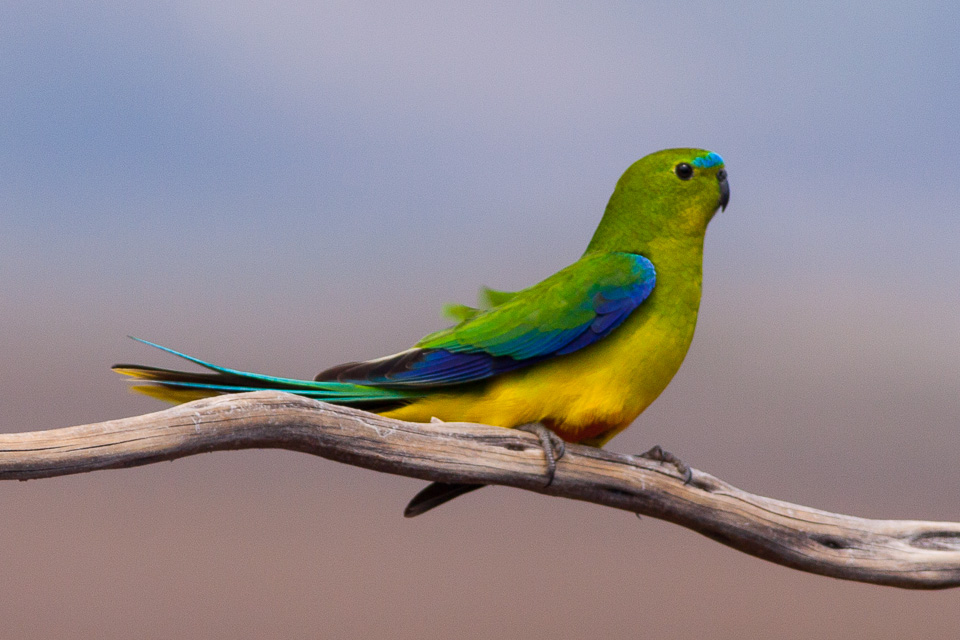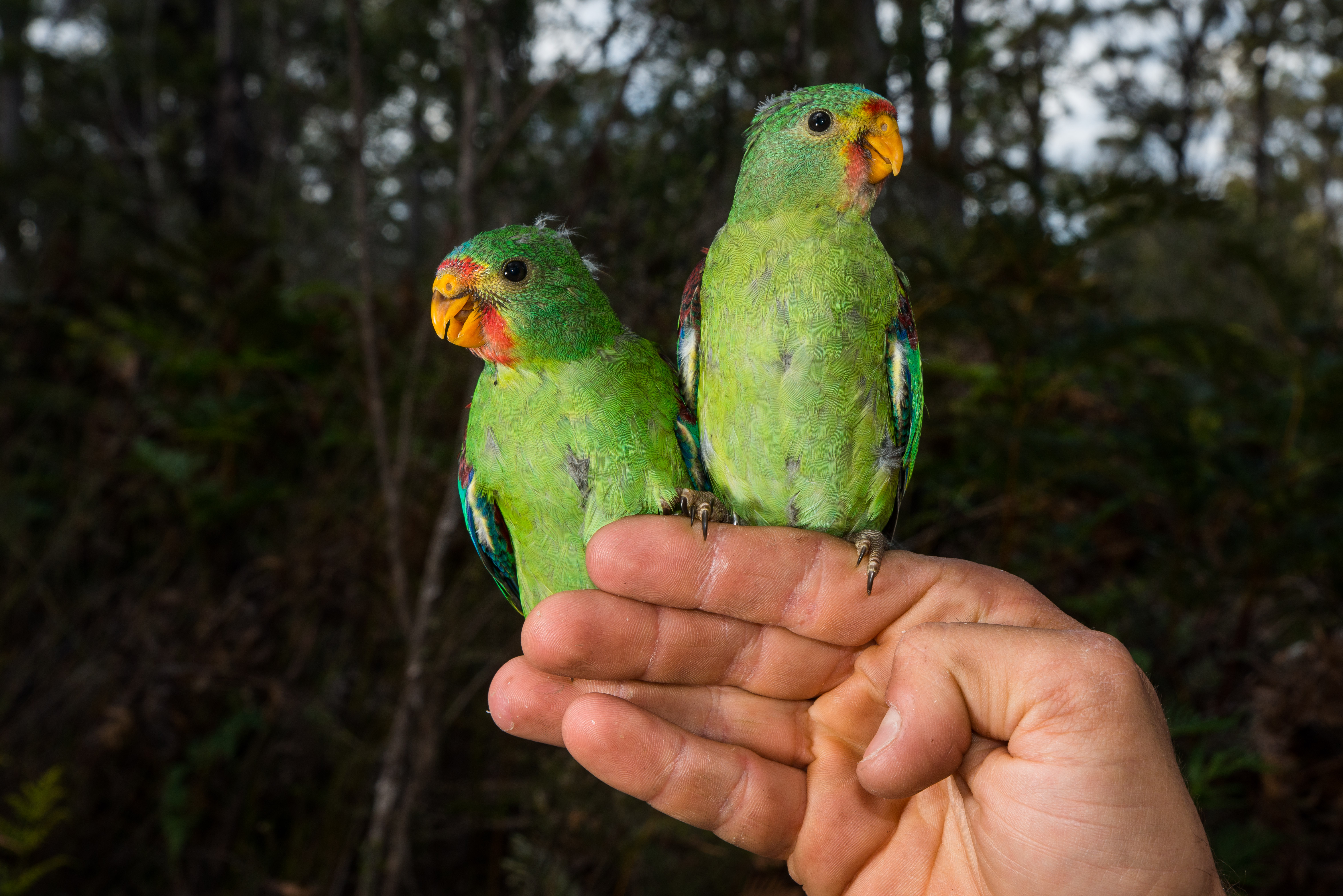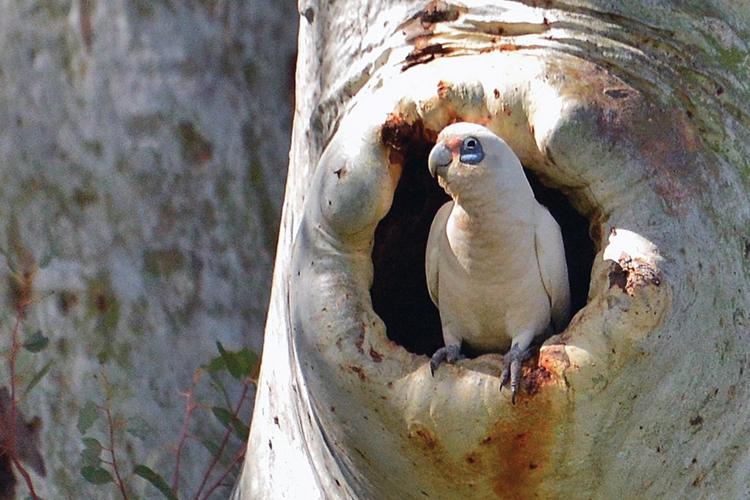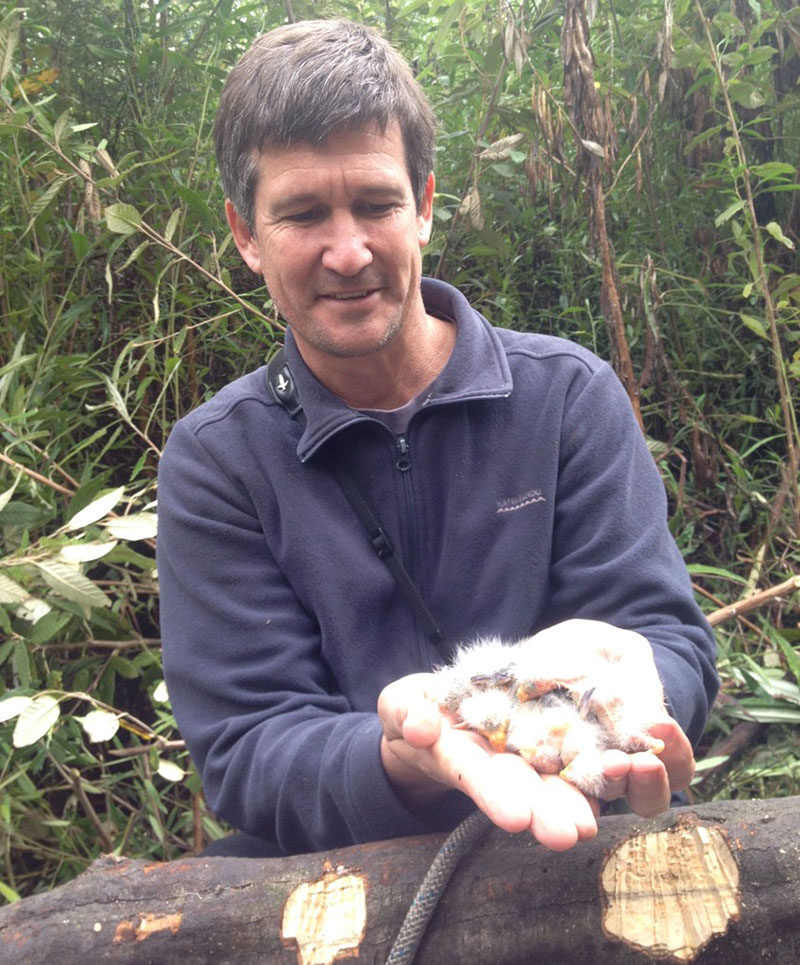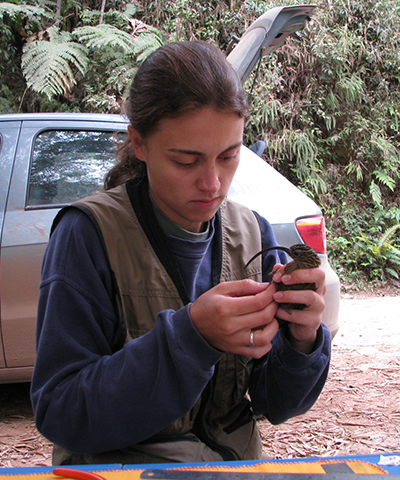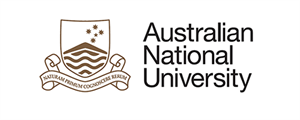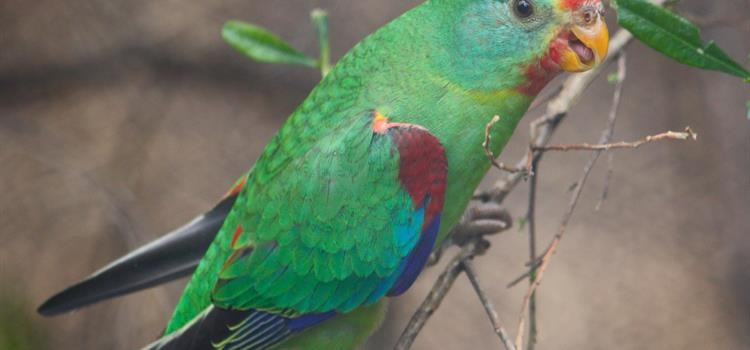
The conservation problem
This project is developing new methods to help prevent the extinction of two Critically Endangered and one Endangered Tasmanian hollow-nesting bird species: orange-bellied parrot, swift parrot and forty-spotted pardalote.
The threats to these species include loss of nesting hollows, decline in habitat quality leading to lack of food, increased disease and parasite loads, and direct predation by introduced sugar gliders.
Our research will find and test the best techniques for avoiding or mitigating these threats, in an adaptive management approach. This will provide these species with the best possible chance to breed successfully and recover their numbers.
We also aim to find important remaining habitat and potential sites to move animals to establish new populations. Without intervention, all three species are likely to become extinct.
How this research is addressing the problem
Our research is paving the way for urgently needed management interventions. Over the three years of the project, it will include:
- Enhancing critical habitat on predator-free offshore islands
- Testing predator-proof nest boxes for mainland Tasmania
- Increasing reproduction in populations with dangerously low numbers
- Developing methods for parasite and disease control
- Identifying critical remaining habitat and sites for translocation and establishment of new populations.
Our work is designed to influence policy and engage managers at a practical level through working closely with Tasmanian government agencies. Working relationships with NGOs and a major Aboriginal corporation are ensuring that the public and traditional land-owners are fully engaged.
What we aim to collectively achieve through the research
This project aims to address the dual problems of severe predation by introduced sugar gliders and chronically low rates of population recruitment in these highly imperilled Tasmanian hollow-nesting bird species. Specifically, we aim to:
- Reduce the number of sugar gliders from key breeding sites and mitigate their impacts in hollow-nesting birds, supported by research on population dynamics through deployment of nest boxes across mainland Tasmania
- Dramatically improve the population trajectory for swift parrots over 20 years via on-ground conservation actions, including the provision of safe nesting sites, reducing the number of introduced predator species, and identifying key habitat for protection
- Securing the forty-spotted pardalote population by protecting remaining habitat and reducing their parasites, and preparing for population re-introduction/expansion on mainland Tasmania
- Increasing the population size of wild orange-bellied parrots by improving their survival and reproduction, and preparing for population expansion at further sites.
This project involves the following subprojects:
Project 2.2.1 Saving the orange-bellied parrot
Project 2.2.2 Saving the swift parrot
Project 2.2.3 Conservation and management of the endangered forty-spotted pardalote
Read more:
Tackling threats to endangered hollow nesting birds in Tasmania. Parrots make swift use of nesting boxes in Tasmania
Image: Swift Parrot by Heather/Flickr (CC BY-NC 2.0)
